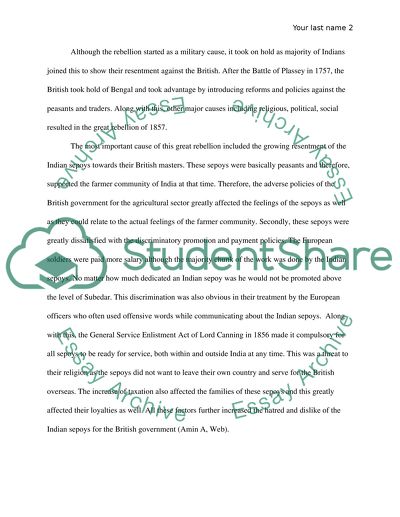Cite this document
(“What caused the Great Sepoy Rebellion of 1857-8 Essay - 1”, n.d.)
What caused the Great Sepoy Rebellion of 1857-8 Essay - 1. Retrieved from https://studentshare.org/history/1621517-what-caused-the-great-sepoy-rebellion-of-1857-8
What caused the Great Sepoy Rebellion of 1857-8 Essay - 1. Retrieved from https://studentshare.org/history/1621517-what-caused-the-great-sepoy-rebellion-of-1857-8
(What Caused the Great Sepoy Rebellion of 1857-8 Essay - 1)
What Caused the Great Sepoy Rebellion of 1857-8 Essay - 1. https://studentshare.org/history/1621517-what-caused-the-great-sepoy-rebellion-of-1857-8.
What Caused the Great Sepoy Rebellion of 1857-8 Essay - 1. https://studentshare.org/history/1621517-what-caused-the-great-sepoy-rebellion-of-1857-8.
“What Caused the Great Sepoy Rebellion of 1857-8 Essay - 1”, n.d. https://studentshare.org/history/1621517-what-caused-the-great-sepoy-rebellion-of-1857-8.


